Short perennial plants serve an important function in the landscape. Low-growing perennial flowers add dimension and layers to the garden, creating an interesting palette and aesthetic with flowers and plants. Garden borders shine with a planting of beautiful short flowers, and low-growing perennials are excellent for accenting walkways and paths. These short perennials also work wonderfully planted between and around taller plants, creating a fuller-looking space and closing up unsightly gaps in the landscape.
Jump to:
- Moss Phlox (Phlox subulata)
- Eastern Pasque Flower (Pulsatilla patens)
- Bearberry (Arctostaphylos uva-ursi)
- Pussytoes (Antennaria plantaginifolia)
- Rose Vervain (Glandularia canadensis)
- Stonecrop (Sedum sp.)
- Perennial Pinks (Dianthus sp.)
- Foamflower (Tiarella sp.)
- Dusty Miller (Jacobaea maritima)
- Woolly Yarrow (Achillea tomentosa)
- Barrenwort (Epimedium grandiflorum)
- Other Interesting Perennials:
All of these low-growing perennials are 16 inches or smaller.
Moss Phlox (Phlox subulata)
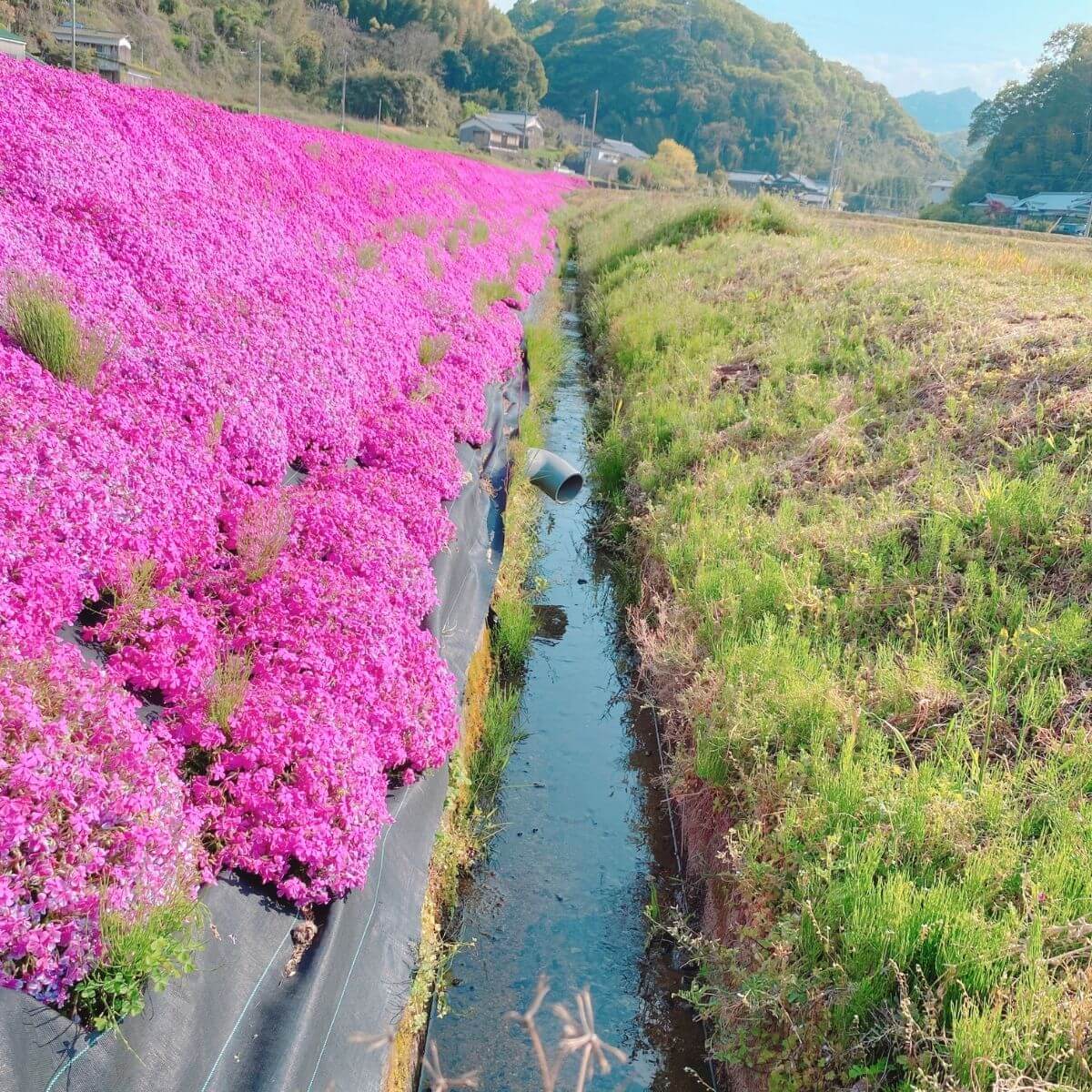
Besides producing some of the sweetest little flowers we know of, Moss Phlox is also remarkable for the variety available. These delicate star-shaped flowers come in pink, white, purple, blue, and bicolor varieties. When Moss Phlox blooms, the ground is transformed into a brilliant splash of color. Moss Phlox grows 3-6 inches tall, covering the ground in dense, attractive green foliage that is moss-like in appearance. Even when not in bloom, this low-growing perennial adds rich color and interest to the landscape. For a pure white flower carpet, check out "Snowflake" or "White Delight" cultivars. For brilliant pinks and purples, look for "Scarlet Flame," "Candy Stripe," or "Purple Beauty." Hardy to zones 3-8.
*There are several types of Phlox, including Creeping Phlox (P.stolenifera) and Garden Phlox (P.paniculata). Moss Phlox is the shortest variety, so look for that for a true groundcover perennial. Creeping Phlox is usually not super tall either, averaging between 12-24".
Eastern Pasque Flower (Pulsatilla patens)
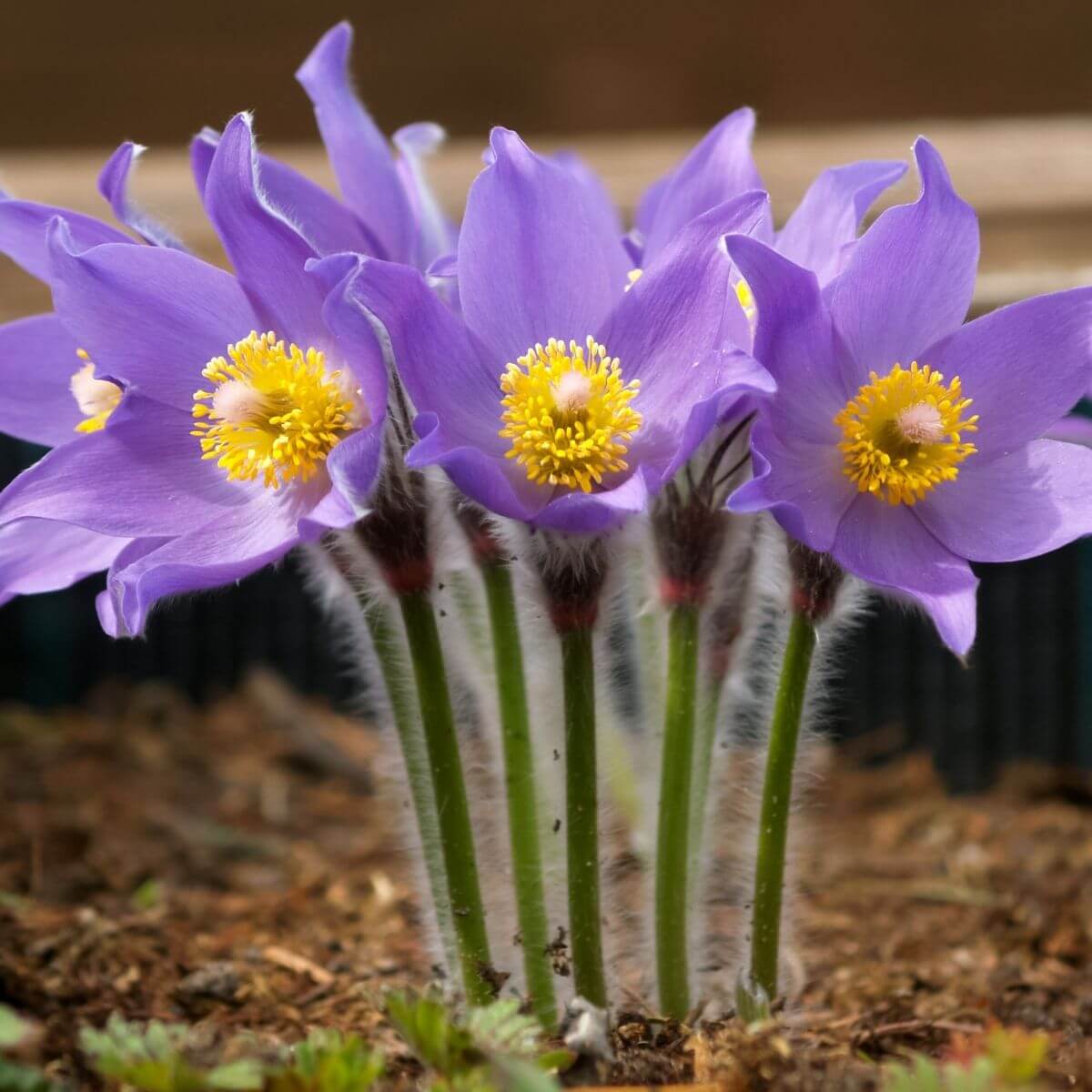
A beautiful early bloomer, Pasque Flower brightens up the spring garden with its solitary blue, white, or purple bell-shaped flowers. Bees and butterflies welcome the arrival of this flower as an early food source, much needed after the cold of winter.
Eastern Pasque Flower averages 3-10 inches tall, rarely growing more than 12 inches high. The sweet delicacy of the petals contrasted with a prominent bright-yellow central stamen is truly one of the joys of springtime.
Each flower grows singularly atop a short green stem, but they emerge in clusters to create a dazzling colorful display. Hardy to zones 4-7.
Get seeds from Amazon
Bearberry (Arctostaphylos uva-ursi)
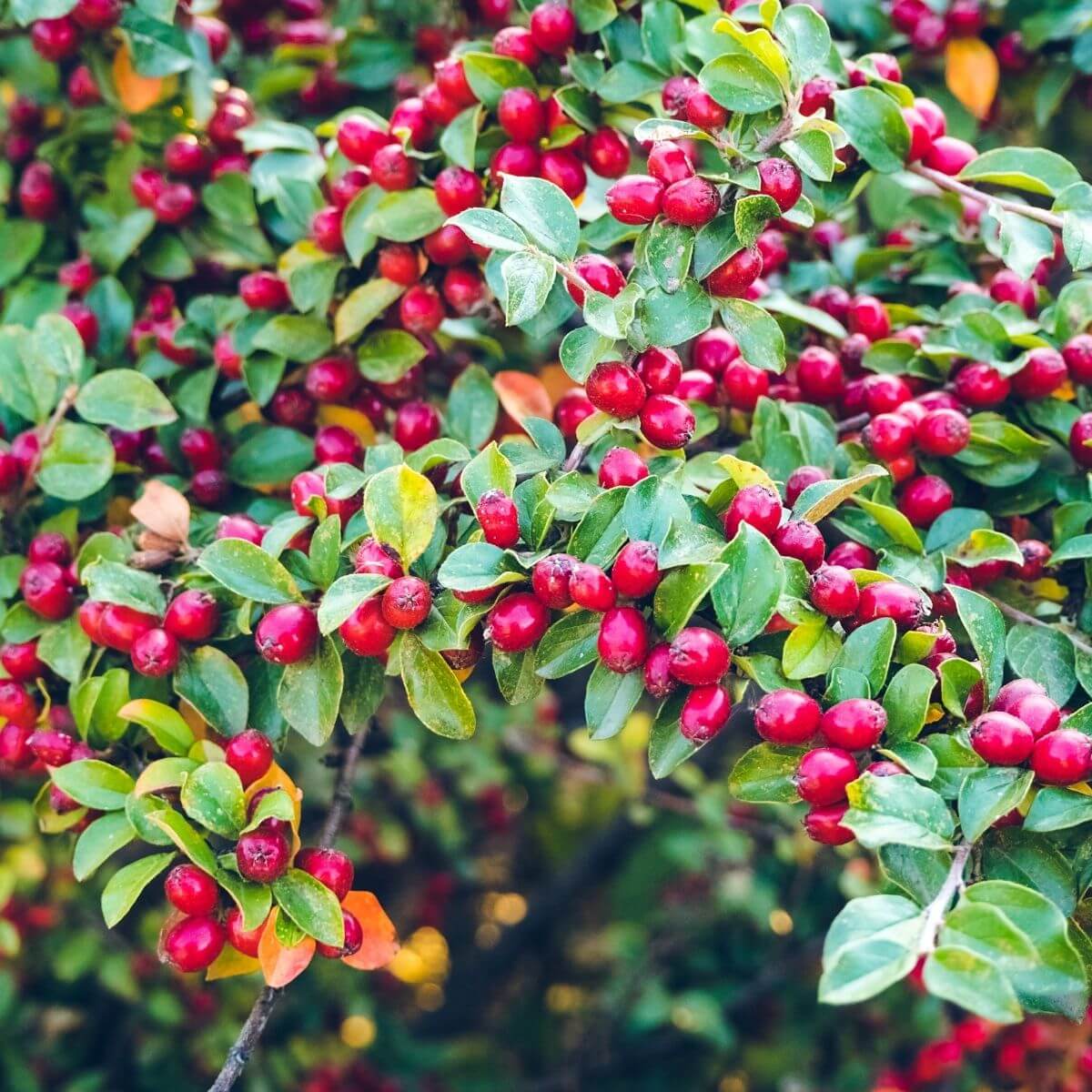
If you have a spot where other plants struggle to develop due to poor soil or excess shade, try growing Bearberry. This low-growing native evergreen shrub thrives in places where other plants can't grow.
Bearberry is a small plant, but the attractive deep green glossy leaves with red stems make it stand out. In spring, tiny white or pink bell-shaped flowers dangle from the stems like little fairy lanterns.
After the flowers, small red edible berries grow, providing an important food source for mammals and birds. The foliage turns a gorgeous reddish-purple for the winter, giving year-round interest to the landscape.
Besides being an excellent ground cover, Bearberry also looks amazing sprawling over rock walls or as a border plant. Hardy to zones 2-6.
Pussytoes (Antennaria plantaginifolia)
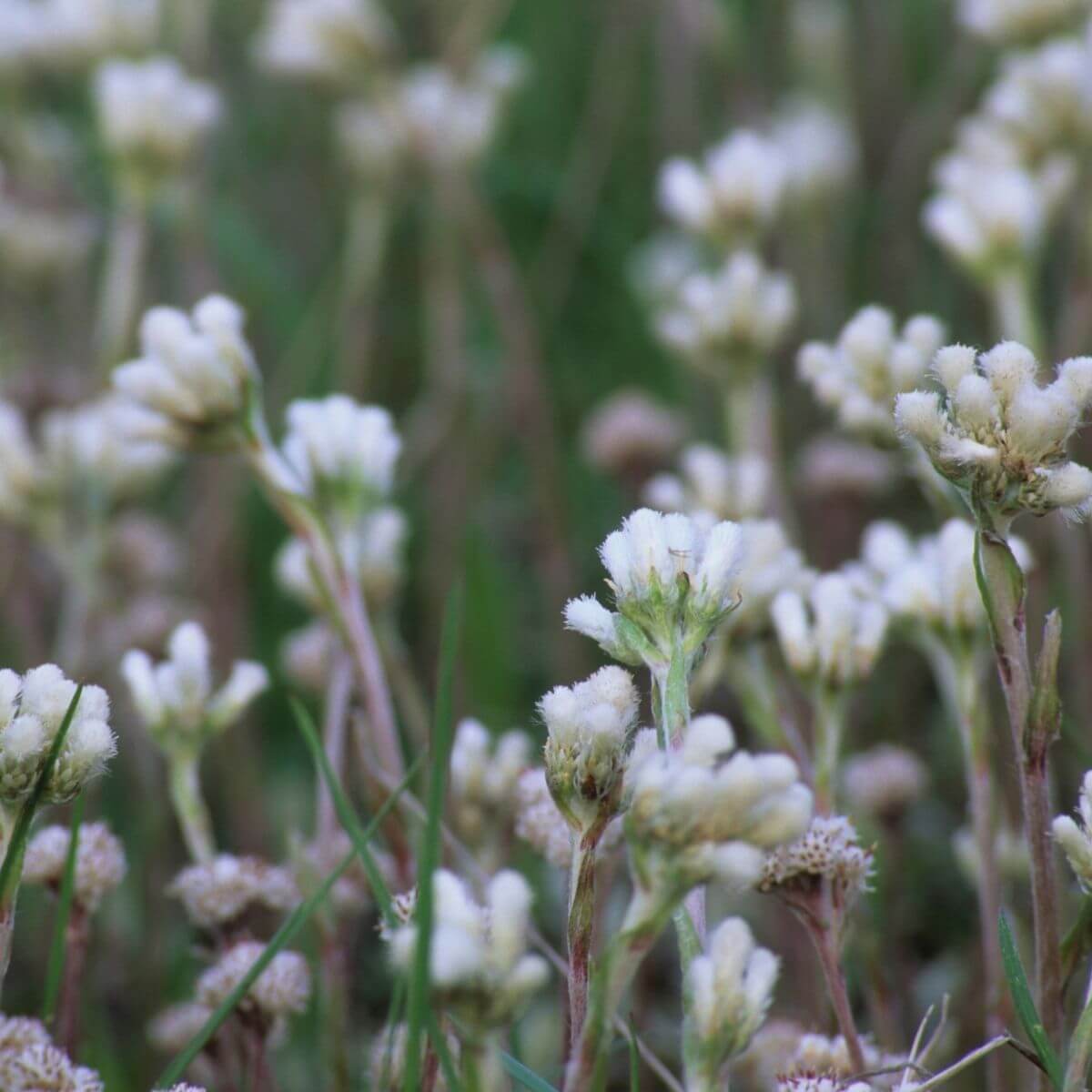
This native perennial is low-growing, low-maintenance, and produces handsome, rich green paddle-shaped leaves. Pussytoes foliage averages 6-12" tall and is the main attraction with this mat-forming perennial.
The flowers are small, white, fuzzy, and unique, looking like little pin cushions or cotton swabs. Pussytoes flowers don't stand out much, but the birds and butterflies still enjoy and appreciate them.
When you're looking for a simple, extremely low-maintenance yet very attractive groundcover, Pussytoes are it. Pussytoes are also drought-tolerant, grow in poor soil, shaded areas, and rarely suffer pests or disease.
This Pussytoes species is native to the eastern US; Small-Leaf Pussytoes (A.parvifolia) is another beautiful option native to the western US. Hardy to zones 3-8.
Rose Vervain (Glandularia canadensis)
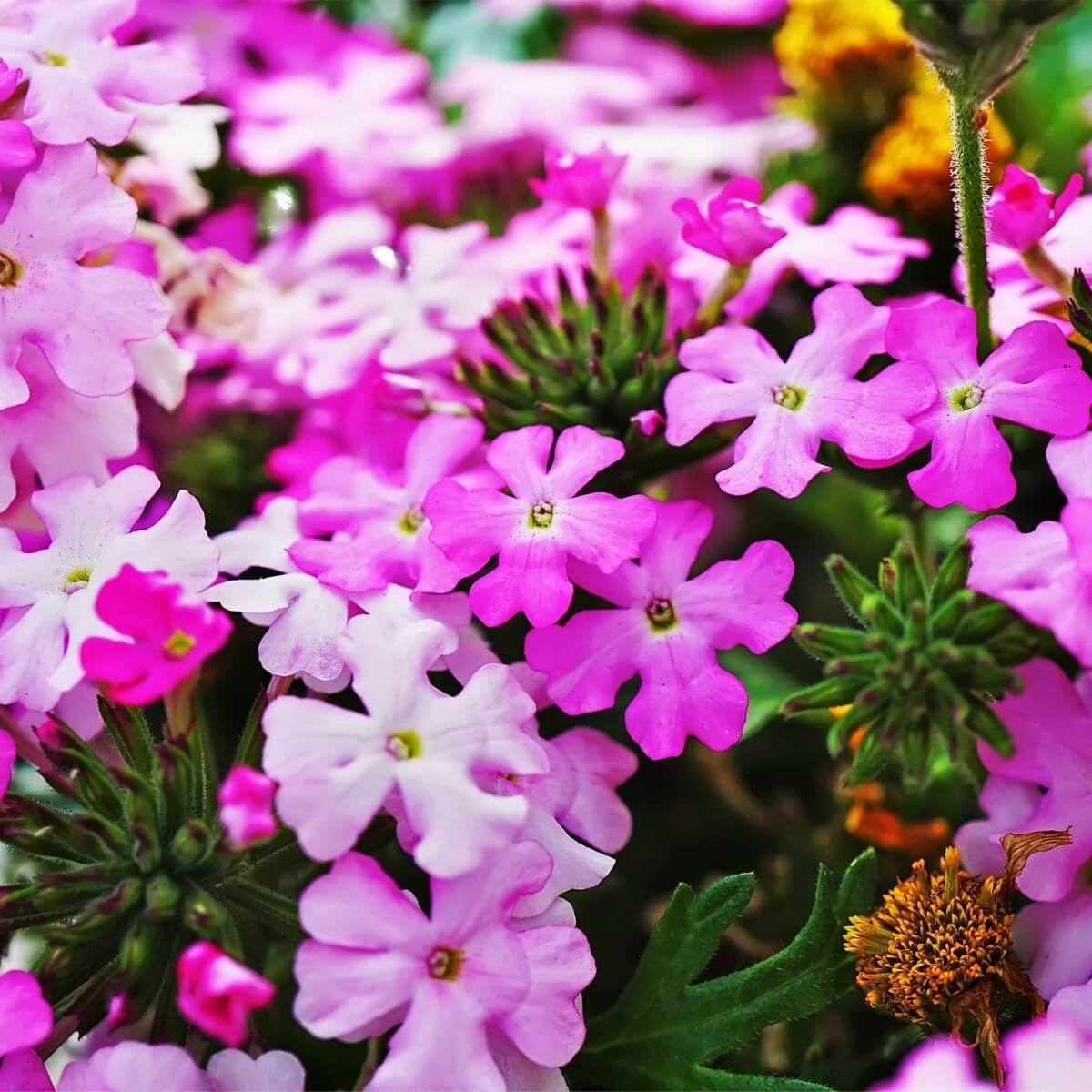
Also commonly know as verbena, Rose Vervain is a low-growing sprawling perennial with delightful blue-purple flowers. Rose Vervain grows flat clusters of little brightly colored five-petaled flowers which hover over the foliage.
When in bloom, this native plant puts on a brilliant color display, attracting scores of butterflies and bees. The foliage is dark green, deeply lobed, and is the perfect background for the radiant flowers.
Rose Vervain grows 6-18 inches tall and is especially appealing planted in large groupings or along a border. It does well in containers and hanging baskets and is adaptable to many growing conditions. Hardy to zones 5-9.
Stonecrop (Sedum sp.)
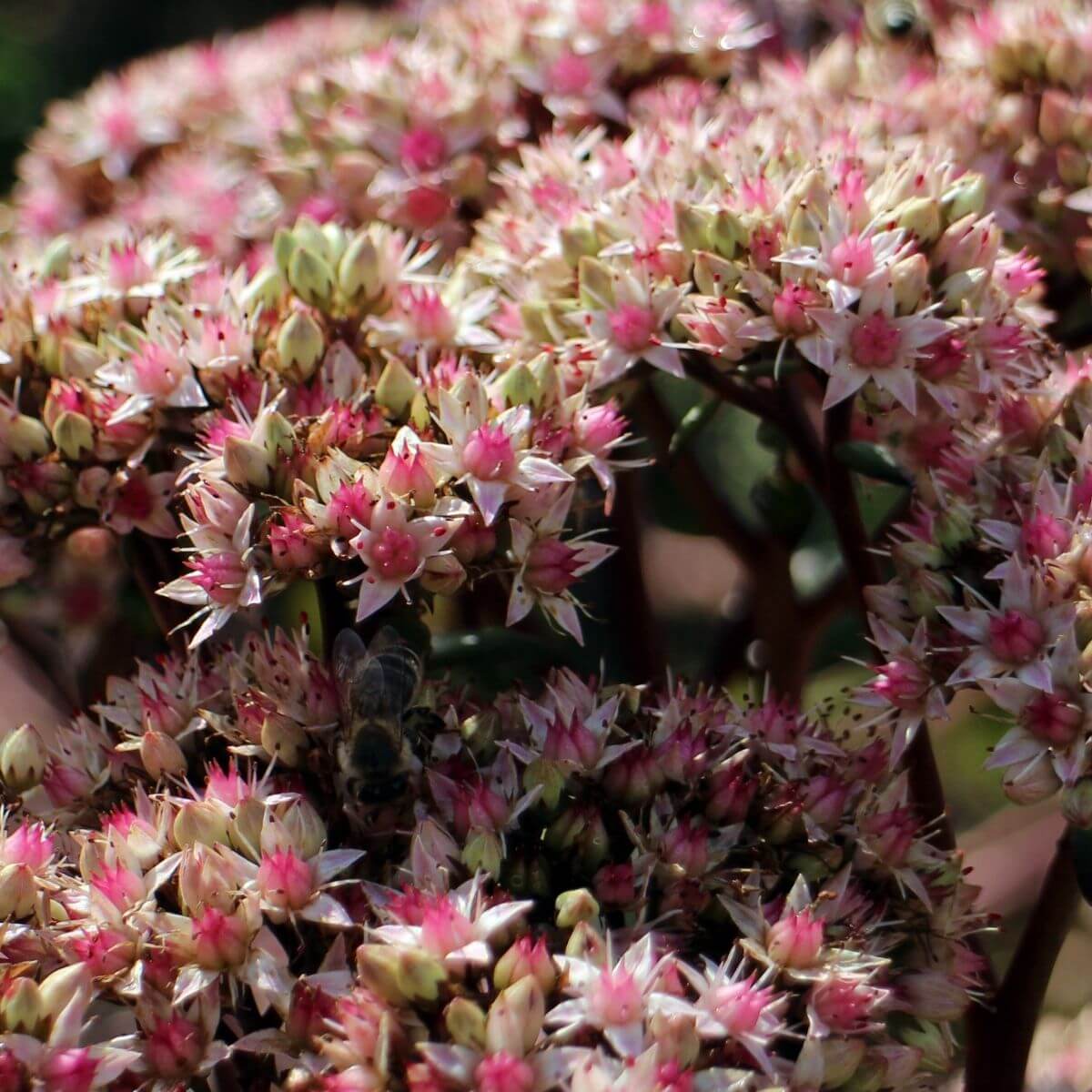
There are so many species and cultivars of Stonecrop that it is difficult to know where to start. All of these perennial plants are on the shorter side, with some height variance between types, but most are between 6-10 inches. They all feature attractive thick succulent leaves with small five-petaled rosette flowers. Stonecrop plants are ground-hugging perennials that form a carpet of green or blue-green leaves, and when in bloom, they burst with flowers. Stonecrop is ideal as a groundcover, edging, and in rock gardens.
It also grows incredibly well in containers. We recommend choosing a native type, like Broadleaf Stonecrop (S.spathulifolium), which has silvery green leaves and bright yellow flowers. Wild Stonecrop (S.ternatum) is native to eastern North America and features light-green leaves and masses of star-shaped brilliant white flowers. Wormleaf Stonecrop (S.stenopetalum) grows native to western North America and has light-green foliage with deep yellow flowers. It is also commonly referred to as the golden constellation plant because of the profuse yellow star-shaped flowers.
Another western North American species, Spearleaf Stonecrop (S.lanceolatum), is the host plant for the Rocky Mountain Apollo butterfly. Spreading Stonecrop (S.divergens) is a native species from western North America, as well, and features deep red succulent leaves and exceedingly bright yellow flowers, which stand out unforgettably against the foliage.
Perennial Pinks (Dianthus sp.)
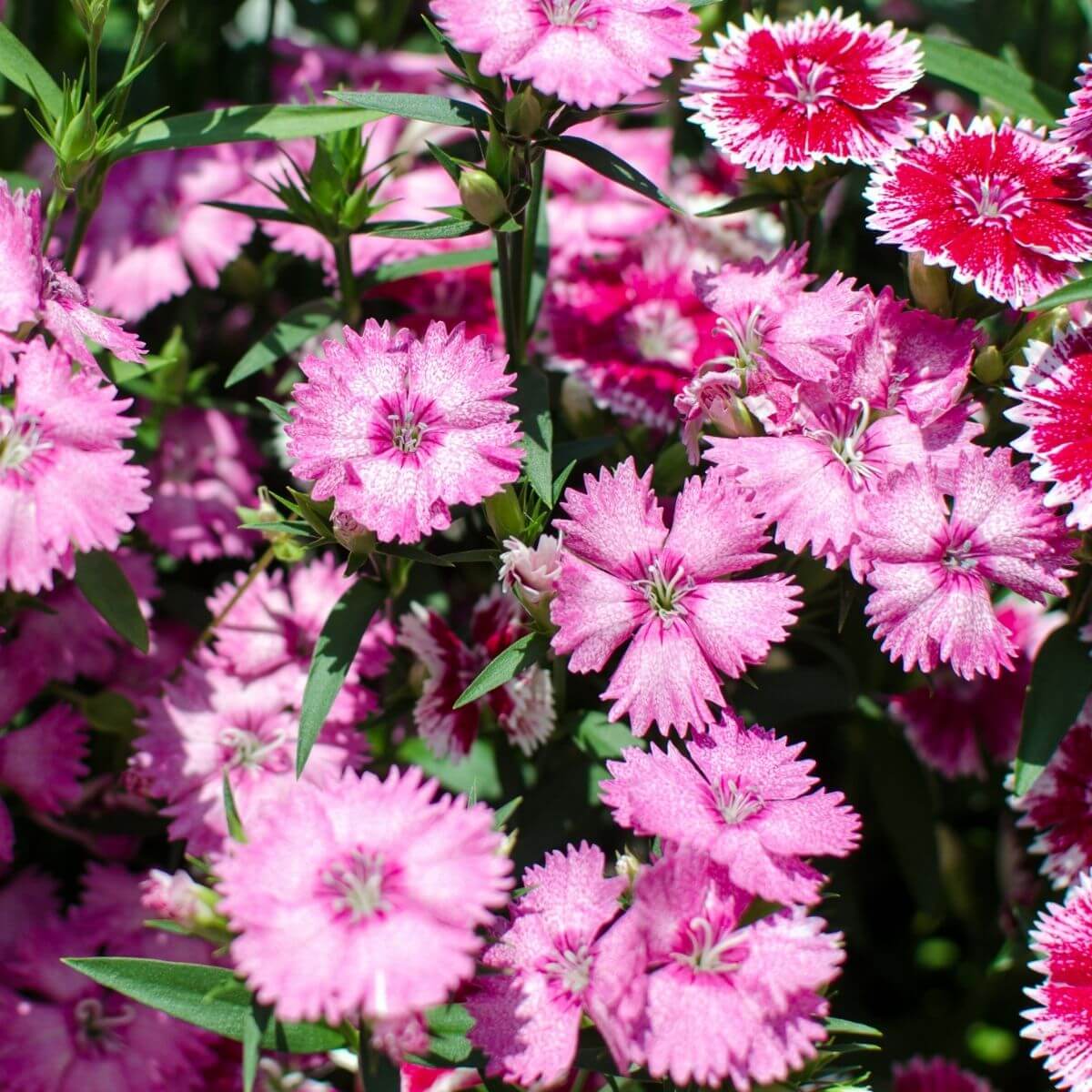
If you've seen Pinks in a spring garden, you'll understand our obsession with this delicate, colorful flower. Perennial Pinks, commonly known by their Latin name, Dianthus, are low-growing, low-maintenance garden gems. With a wide variety of cultivars to choose from, it is easy just to fill the garden with Perennial Pinks and be perfectly content. Colors for these small 1-2" flowers range from pink (of course!) to white, purple, red, and even black, but the real stars are the multi-color varieties with starkly contrasting color combinations.
The dainty frilly-edged petals combined with the abundance with which they bloom make them an easy garden favorite. Pinks foliage is low-key and grass-like, letting the elegant flowers take center stage. Most Pinks are between 6-12" tall and have a sweet clove-like scent.
The fragrance varies widely between varieties, but most of them have at least some perfume. We could write a book of the Pinks we adore, but here are our top six: "Georgia Peach Pie," "Coconut Punch," "Pinball Wizard," "Fire and Ice," "Superstar," and "White Fire." Most Dianthus are hardy to zones 4-8.
Foamflower (Tiarella sp.)
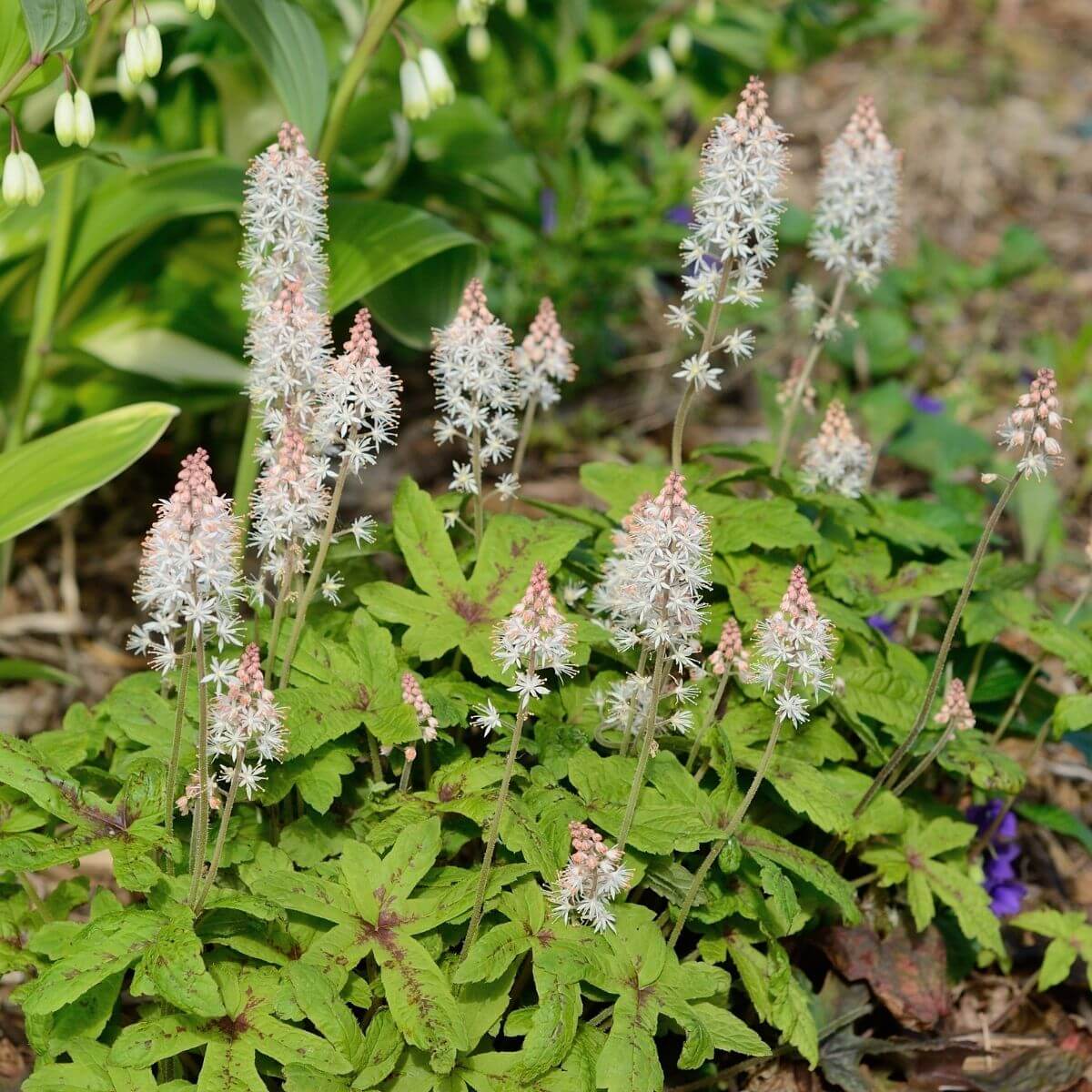
This low-growing perennial produces interesting and attractive foamy-looking flowers, but it is the foliage that draws the most attention. Foamflower foliage is heart, oak leaf, or star-shaped, and green with deep burgundy or black markings.
Most Foamflower plants don't grow above 1 foot, and there are many cultivars to choose from with an array of leaf shapes and variegation. The flowers appear in early spring on stems above the foliage; the airy delicacy of the flowers resembles clouds or piles of foam (hence the name.)
The exceptional foliage remains in full color year-round, sometimes turning a deeper shade in winter. Foamflowers grow wonderfully in shady locations, making them the perfect underplanting for taller shrubs and perennials. Hardy to zones 4-9.
Dusty Miller (Jacobaea maritima)
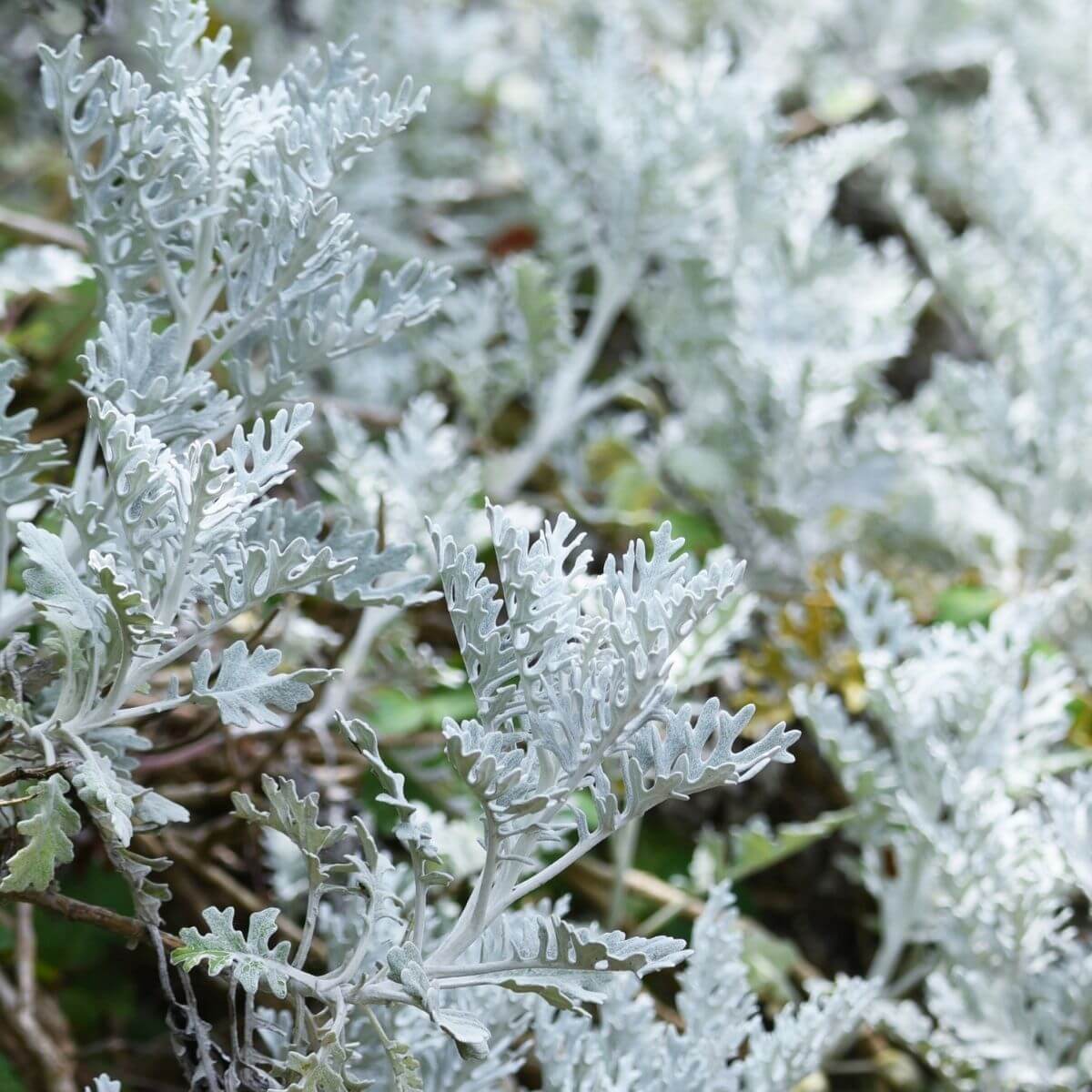
Another plant grown for its distinct foliage, Dusty Miller leaves are highly divided, silvery, ad slightly fuzzy. The leaves feel like soft wool and resemble small deer antlers.
Most gardeners remove the small yellow or white flowers because they detract from the striking foliage display. Dusty Miller plants add a softness to the landscape, toning down brighter colors and displays, and is the perfect ground covering around some of the showier bloomers.
This perennial doesn't distract from the colorful bloomers, and it doesn't get lost in the shadows either. Dusty Miller plants put forth their own intriguing exhibition that acts as the perfect backdrop or contrast for darker, more intense flowers. Hardy to zones 8-11.
Woolly Yarrow (Achillea tomentosa)
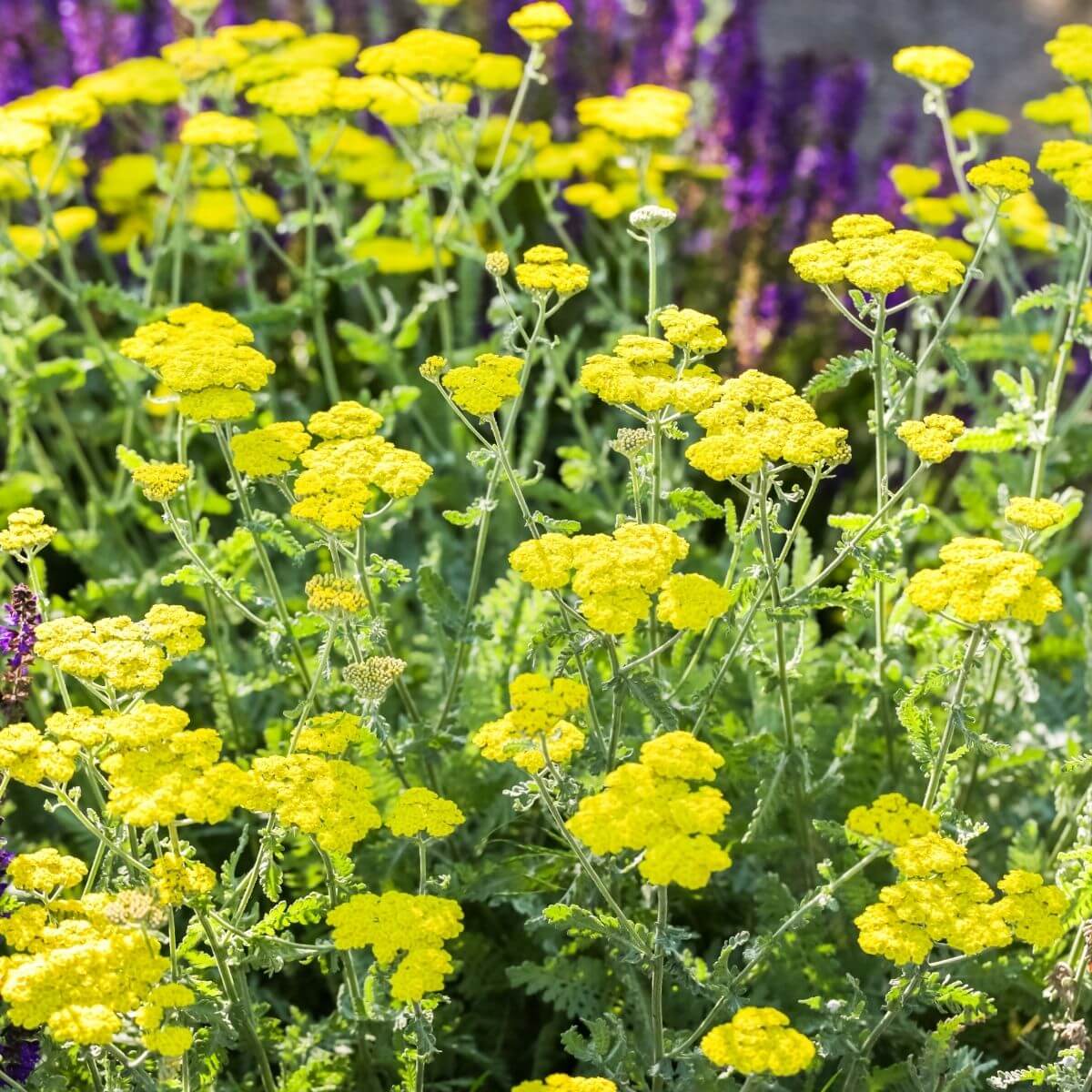
Most Yarrows get quite tall, but not Woolly Yarrow. This perennial flower forms dense clumps of 6-12" foliage that is olive-green, with a fern-like shape, and very fuzzy. In early summer, Woolly Yarrow puts forth clusters of deep yellow flower disks which hover over the foliage for a long time. Woolly Yarrow is hardy and drought-tolerant. It's also effortless to grow and maintain.
Woolly Yarrow spreads across the ground, creating a dense furry carpet of leaves. This perennial flower is excellent for rock gardens, as ground cover, planted atop a stone wall, and grown in containers. Hardy to zones 3-7.
Barrenwort (Epimedium grandiflorum)
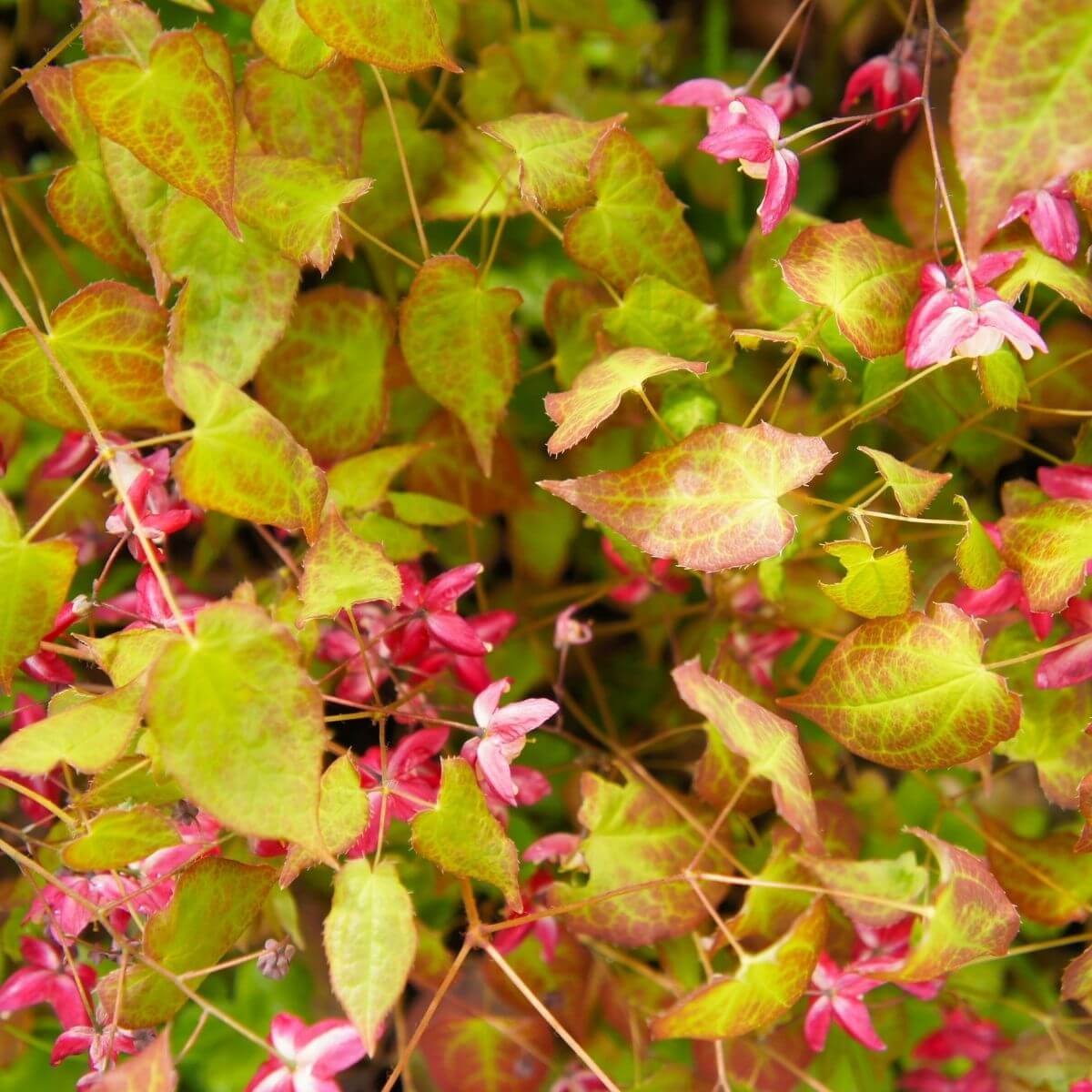
Also commonly called Fairy Wings, the flowers of Barrenwort do not disappoint. They're not especially large, but their shape is so unusual you can't help but adore them.
Barrenwort flowers dangle from the delicate, wiry stems, almost like little brightly colored spiders dangling off a web. The petals spread apart, which gives them the appearance of legs or wings.
While the flowers are fascinating, they don't last a long time. But that just means you need to take the time to appreciate them fully while in bloom.
The foliage is equally as interesting, heart-shaped, and deep green or burgundy, depending on the variety. Barrenwort plants grow 8-12" high and like partial to full shade. They are drought-tolerant, disliked by deer and rabbits, and are the perfect shade garden perennial. Hardy to zones 4-8.
Creating layers in the garden is an essential element of a well-rounded attractive landscape. Low-growing perennials provide texture, appeal, and interest, often longer than some taller, more striking options. Plus, they fit in many more locations. Explore the world of low-growing perennials with this list and see how you can incorporate some of them into your garden design for a captivating and engaging landscape arrangement.

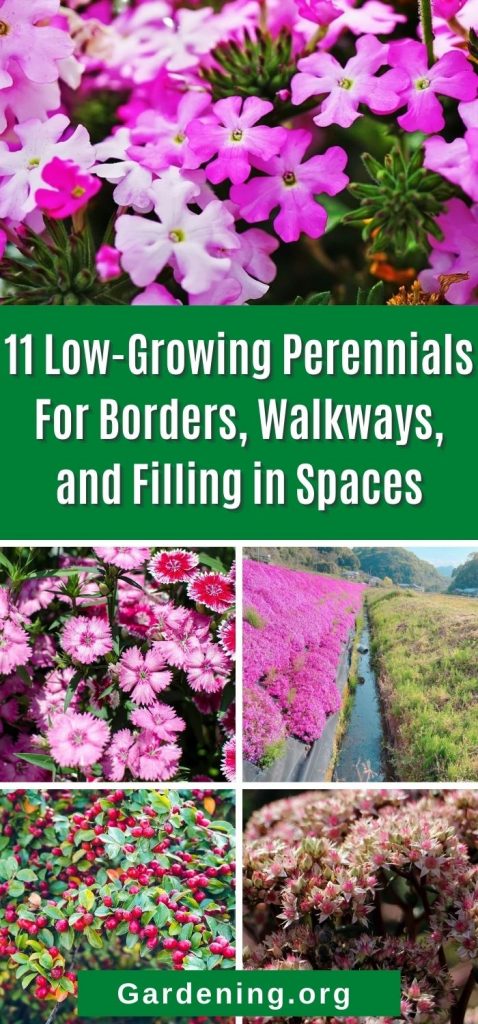
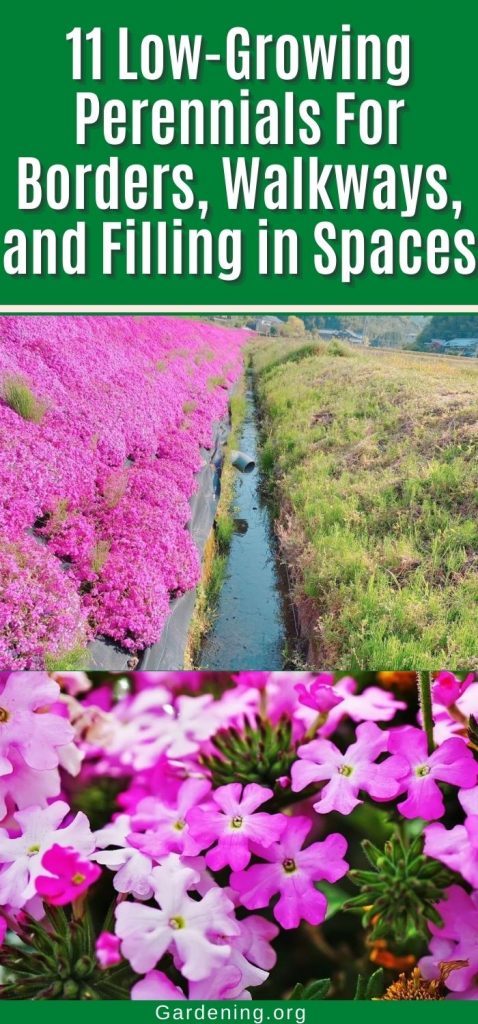
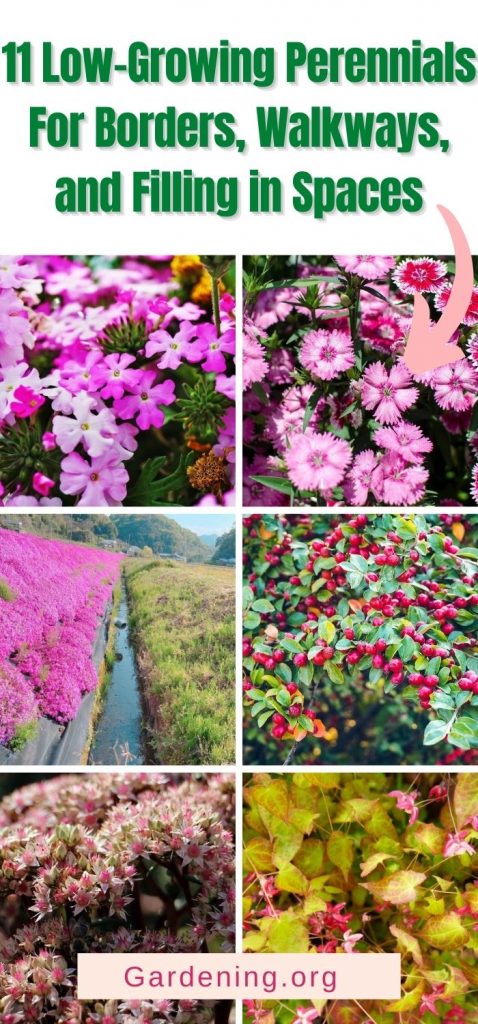


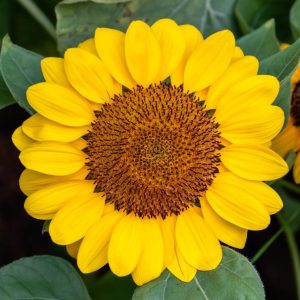
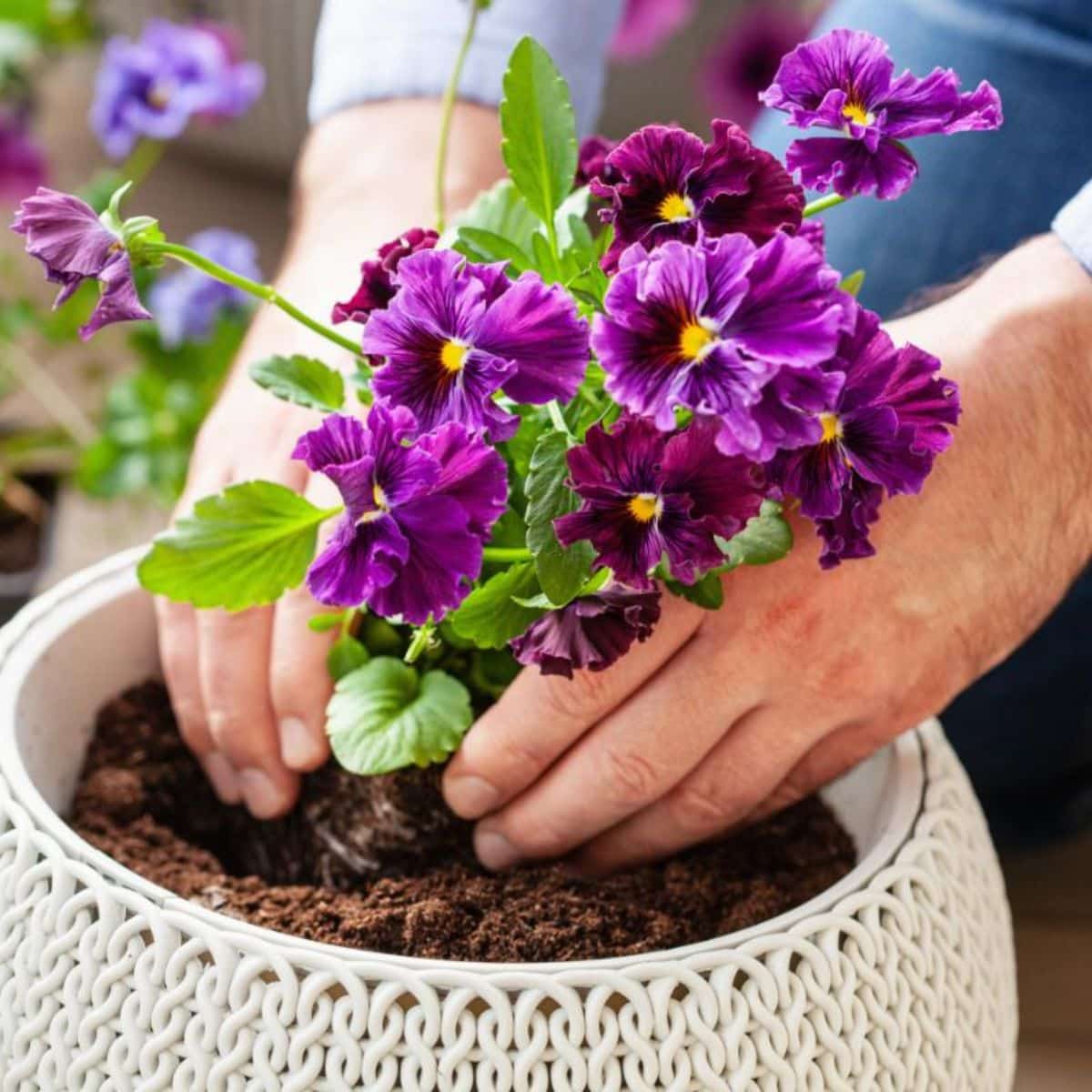
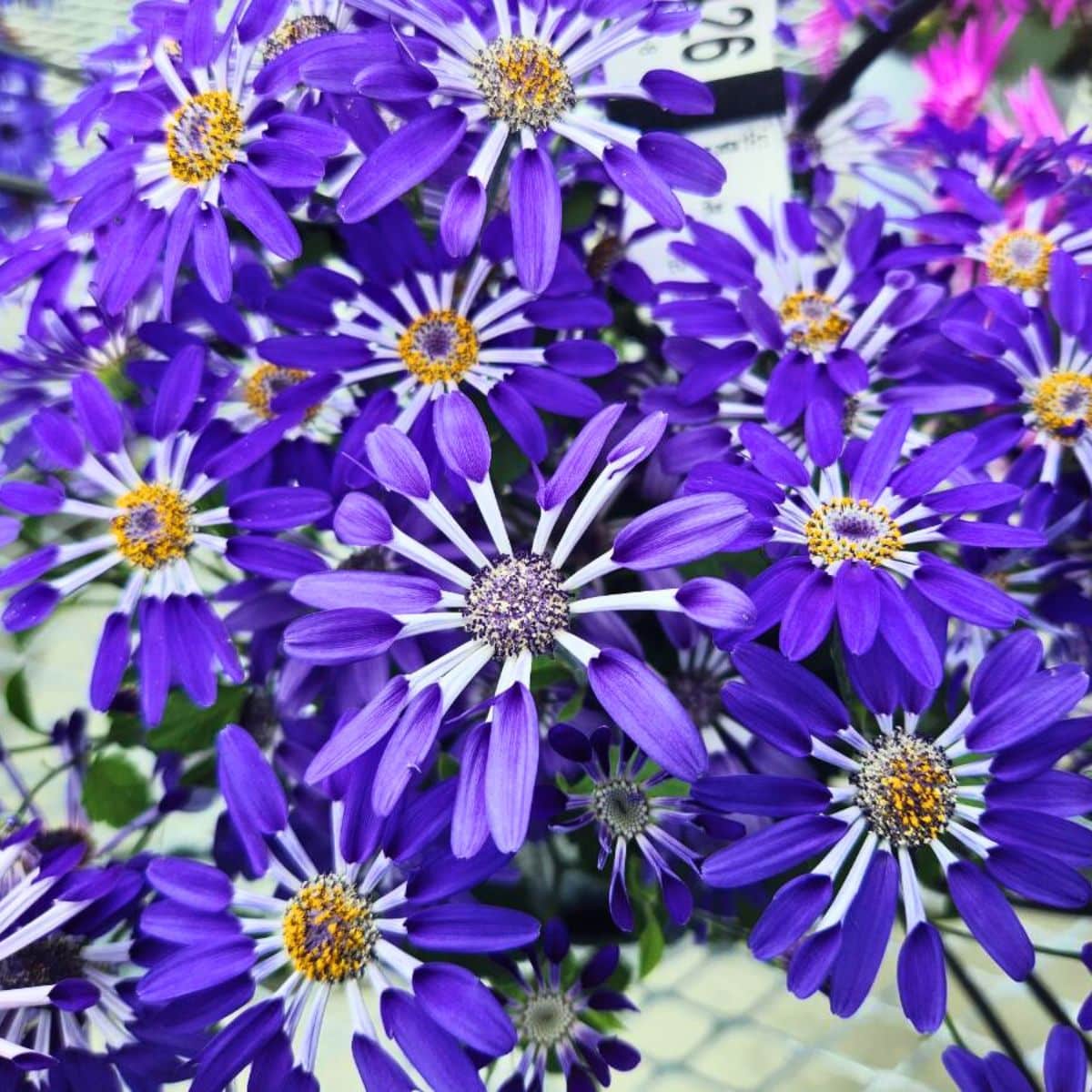
marilyn
advise on deer resistant groundcovers and plants